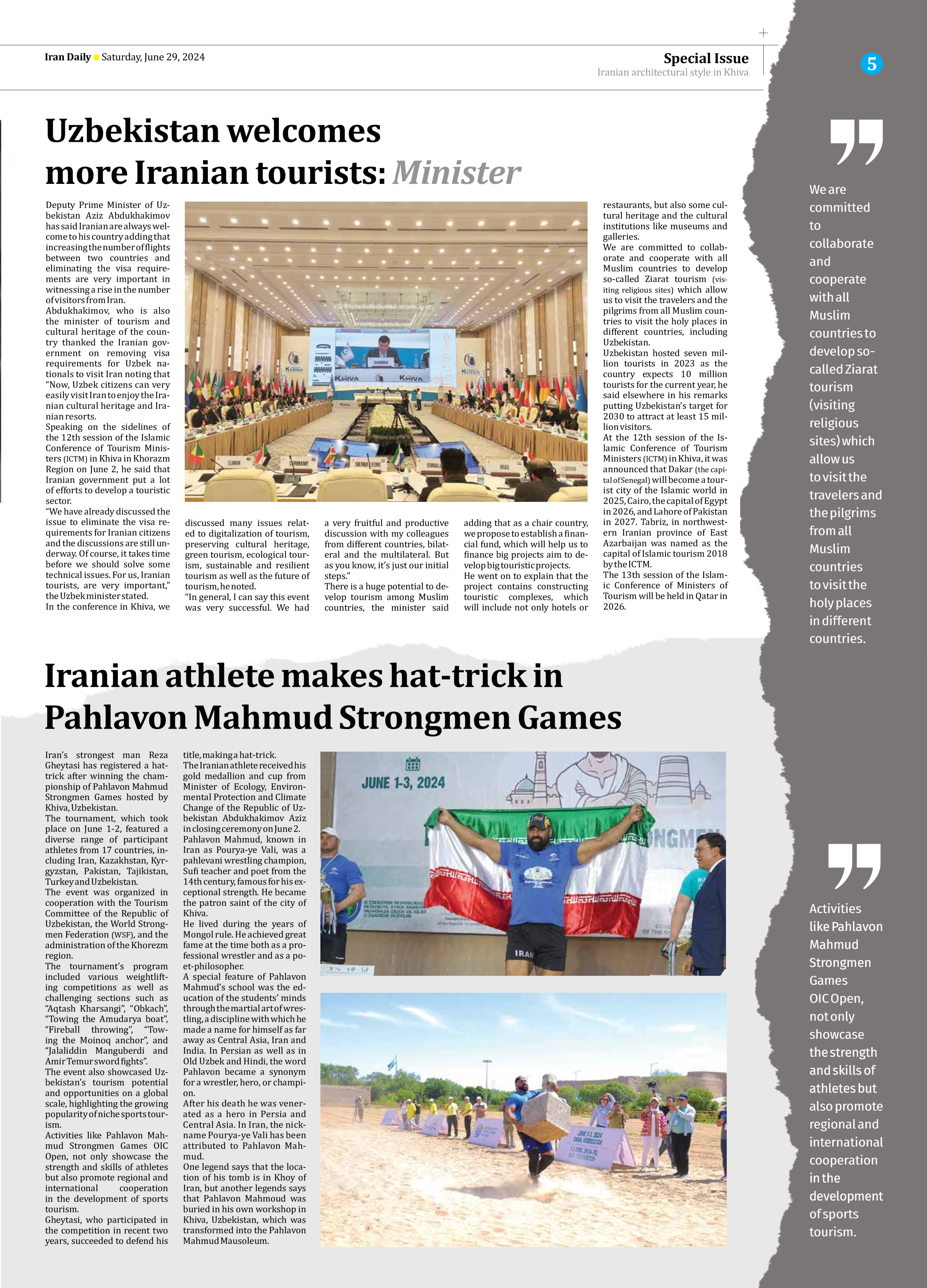
Copy in clipboard...
Iranian athlete makes hat-trick in Pahlavon Mahmud Strongmen Games
The tournament, which took place on June 1-2, featured a diverse range of participant athletes from 17 countries, including Iran, Kazakhstan, Kyrgyzstan, Pakistan, Tajikistan, Turkey and Uzbekistan.
The event was organized in cooperation with the Tourism Committee of the Republic of Uzbekistan, the World Strongmen Federation (WSF), and the administration of the Khorezm region.
The tournament’s program included various weightlifting competitions as well as challenging sections such as “Aqtash Kharsangi”, “Obkach”, “Towing the Amudarya boat”, “Fireball throwing”, “Towing the Moinoq anchor”, and “Jalaliddin Manguberdi and Amir Temur sword fights”.
The event also showcased Uzbekistan’s tourism potential and opportunities on a global scale, highlighting the growing popularity of niche sports tourism.
Activities like Pahlavon Mahmud Strongmen Games OIC Open, not only showcase the strength and skills of athletes but also promote regional and international cooperation in the development of sports tourism.
Gheytasi, who participated in the competition in recent two years, succeeded to defend his title, making a hat-trick.
The Iranian athlete received his gold medallion and cup from Minister of Ecology, Environmental Protection and Climate Change of the Republic of Uzbekistan Abdukhakimov Aziz in closing ceremony on June 2.
Pahlavon Mahmud, known in Iran as Pourya-ye Vali, was a pahlevani wrestling champion, Sufi teacher and poet from the 14th century, famous for his exceptional strength. He became the patron saint of the city of Khiva.
He lived during the years of Mongol rule. He achieved great fame at the time both as a professional wrestler and as a poet-philosopher.
A special feature of Pahlavon Mahmud’s school was the education of the students’ minds through the martial art of wrestling, a discipline with which he made a name for himself as far away as Central Asia, Iran and India. In Persian as well as in Old Uzbek and Hindi, the word Pahlavon became a synonym for a wrestler, hero, or champion.
After his death he was venerated as a hero in Persia and Central Asia. In Iran, the nickname Pourya-ye Vali has been attributed to Pahlavon Mahmud.
One legend says that the location of his tomb is in Khoy of Iran, but another legends says that Pahlavon Mahmoud was buried in his own workshop in Khiva, Uzbekistan, which was transformed into the Pahlavon Mahmud Mausoleum.







